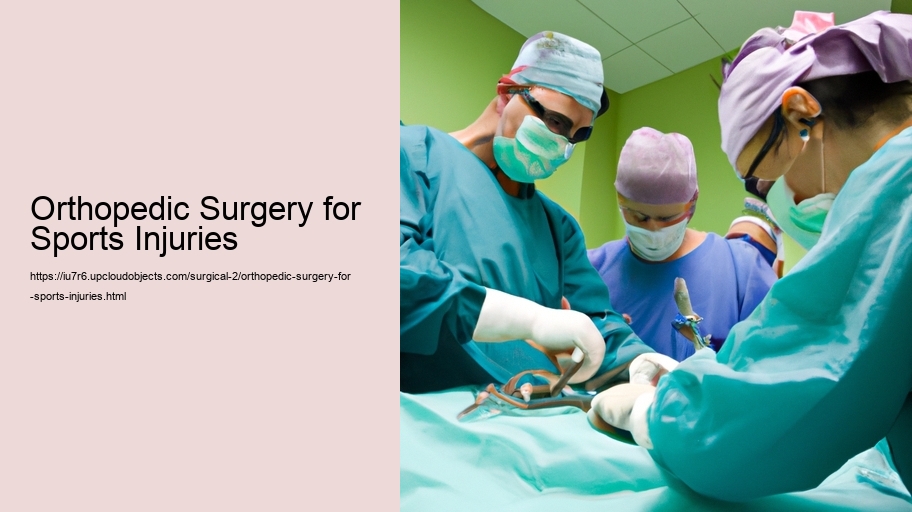Orthopedic Surgery for Sports Injuries: A Path to Recovery
Sports are woven into the fabric of our society, promoting health, teamwork, and a spirit of competition. Athletes, from the weekend warrior to the professional, push their bodies to the limit in the pursuit of excellence. However, this quest often comes with a price - injuries. When conservative treatments like rest, ice, compression, and elevation (RICE) are insufficient, orthopedic surgery becomes a beacon of hope for many athletes seeking to return to the field, court, or track.
Orthopedic surgery focuses on the musculoskeletal system, addressing injuries to bones, joints, ligaments, tendons, and muscles. Sports injuries can range from simple sprains and strains to complex tears and fractures, each requiring a tailored approach. The role of orthopedic surgery in sports injuries is pivotal, not only in repairing damage but also in restoring function and preventing future injuries.
One of the most common sports-related injuries is a tear of the anterior cruciate ligament (ACL) in the knee. The ACL is crucial for stability and often requires surgical intervention when torn, especially for athletes. Surgery generally involves reconstructing the ligament using a graft from the patient's body or a donor. Postoperative rehabilitation is rigorous and essential for a successful return to sport.
Shoulder injuries also plague athletes, particularly those involved in overhead activities like baseball pitching or swimming. Rotator cuff tears can be a career-threatening injury for athletes, but orthopedic surgery can repair the damaged tendons and muscles. Advances in arthroscopic techniques have made the surgery less invasive, resulting in shorter recovery times and better outcomes.
Orthopedic surgeons also address acute fractures, which are common in contact sports and activities with a high risk of falls. Surgical intervention is often necessary to realign the bones and secure them with hardware such as screws, plates, or rods. This approach ensures proper healing and minimizes the risk of complications like malunion or nonunion.
Sports injuries are not exclusive to the professional athlete; they affect individuals at all levels of physical activity. The weekend hiker who suffers an ankle fracture or the amateur tennis player with a torn meniscus in the knee also benefit from the expertise of orthopedic surgeons. The goal is always to enable patients to return to their preferred activities safely and effectively.
Moreover, orthopedic surgery for sports injuries has been a driver of innovation. Surgeons and researchers continuously seek new materials for grafts, better hardware for fixing fractures, and advanced techniques that reduce recovery time and improve surgical outcomes. The field is also exploring biologics like stem cells and platelet-rich plasma (PRP) to enhance healing and regeneration.
However, the journey does not end in the operating room. Recovery from orthopedic surgery is a marathon, not a sprint. Physical therapy plays a critical role in regaining strength, flexibility, and range of motion. It is a collaborative effort between the surgeon, physical therapist, and the athlete. Adherence to a rehabilitation program is just as important as the surgery itself.
In conclusion, orthopedic surgery for sports injuries is an essential aspect of modern sports medicine. It provides athletes with the opportunity to overcome their injuries and regain their pre-injury levels of performance. While the prospect of surgery can be daunting, the advancements in techniques, technology, and postoperative care offer a promising pathway to recovery. As the field evolves, so does the potential for even better outcomes, allowing athletes to continue pursuing their passions with confidence and vitality.
